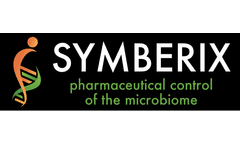Metabolism Drug Articles & Analysis
24 articles found
This preparation contains a mixture of metabolic enzymes, including cytochrome P450s, which play a pivotal role in drug metabolism. ...
Role in Drug Metabolism The role of cytochrome P450 in drug metabolism is two-fold: it can either detoxify drugs or convert them into active metabolites. ...
Furthermore, the presence of multiple isoforms of receptor proteins can lead to variations in drug efficacy and safety. Therefore, a comprehensive understanding of receptor biology is essential for successful drug targeting. ...
However, tumors are heterogeneous, and each tumor has its own metabolic characteristics. Even different tumor cells within the same tumor differ in their metabolic patterns. ...
The result can be used to guide the screening and development of drugs, and support the evaluation of their safety and the design of clinical drug delivery protocol. Pharmacokinetic characteristics are composed of and determined by drug absorption, distribution, metabolism and excretion. The structure, physiological properties ...
Antibody-drug conjugates (ADCs) are a new class of drugs that combine the advantages of both antibodies and small molecule toxins. ...
Transdermal drug delivery system is a type of drug formulation that is absorbed into the body circulation through capillaries at a certain rate through the skin to produce drug effects. Transdermal drug delivery systems allow the drug to continuously diffuse through the skin, penetrate and absorb into the blood ...
One critical element in the drug development process is drug metabolism and pharmacokinetics (DMPK), which refers to how a drug is absorbed, distributed, metabolized, and excreted (ADME) from the body. In vitro DMPK services, along with absorption, distribution, metabolism, excretion, and ...
Hepatocytes are the chief functional cells of the liver, responsible for the selective uptake, metabolism and excretion of most drugs. Cells for use in plate cultures or suspension assays represent a key tool for predicting properties such as hepatotoxicity, metabolism, and potential drug-drug interactions. Since ...
The most reliable way to detect HP is to use this non-invasive 13C-UBT method, which can infer H. pylori in the stomach by detecting the 13C/12C isotope ratio in the exhaled gas after oral administration of 13C-urea. Drug Metabolism Study The study of drug metabolism in the body is a very critical process for the development of ...
One critical element in the drug development process is drug metabolism and pharmacokinetics (DMPK), which refers to how a drug is absorbed, distributed, metabolized, and excreted (ADME) from the body. In vitro DMPK services, along with absorption, distribution, metabolism, excretion, and ...
Firstly, they provide information on drug absorption, distribution, metabolism, and elimination, which are crucial for determining appropriate dosages and treatment regimens in humans. ...
Drug-to-antibody ratio (DAR, drug-to-antibody ratio) The number of cytotoxic drugs connected to each antibody is the drug-to-antibody ratio (DAR). When the DAR increases, the drug metabolism rate of ADC drugs increases, the half-life decreases, and the systemic toxicity ...
Abstract – Unexpected metabolism in modification and conjugation phases can lead to the failure of many late-stage drug candidates or even withdrawals of approved drugs. Thus, it is critical to predict the sites of metabolism (SoM) for enzymes, which are known to interact with drug-like molecules, in the ...
CYP450 and Biosynthesis CYP450 involved in drug metabolism mainly includes seven important subtypes of CYP1, CYP2, and CPY3 families, especially CPY3A4. CYP3 family accounts for 28.8% of the total intrahepatic CYP450, which is an important enzyme involved in the first-pass effect of oral drugs. Many opioid analgesics can be ...
Pharmacogenetics and pharmacogenomics have now expanded from purely human genetic studies to the study of potential mechanisms of human gut microbes on drug efficacy. Bidirectional Effects Through years of research, it has been revealed that intestinal flora can synthesize a range of enzymes involved in drug metabolism, including oxidases and ...
Pharmaceutical excipients are natural or synthetic substances formulated together with the active ingredients of the drug, whose purpose is to increase the formulations containing effective active ingredients or endow the active ingredients in the final dosage form with therapeutic effects, such as promoting drug absorption or solubility. ...
Biocatalysis involves using natural substances, such as enzymes, from biological sources or entire cells which make chemical reactions more rapid. Enzymes are a critical element in the catalysis of a large number of reactions. This includes the production of alcohol from fermentation and the production of cheese by the breakdown of milk proteins. Many biocatalytic processes have been implemented ...
The liver plays an incredibly important role in the human body by metabolizing drugs and other compounds. Developing accurate in vitro liver models to study is a critical step in better understanding the biological dynamics of our bodies and removing our dependence on animal models. ...
Durham, NC (April 28, 2020) - A review article published in PNAS highlights Symberix's efforts to understand the role of the human microbiota in drug efficacy and toxicity. Symberix co-founder Matt Redinbo is featured in the article alongside other leaders from the emerging field of “pharmacomicrobiomics” -- the study of mechanisms behind the microbial impact on ...











